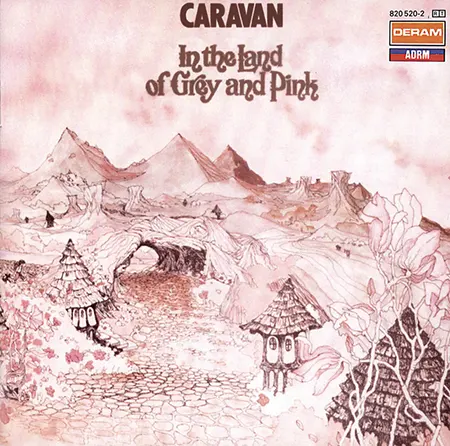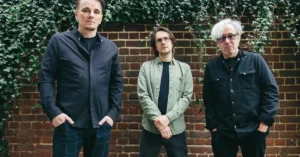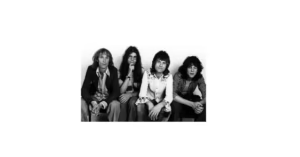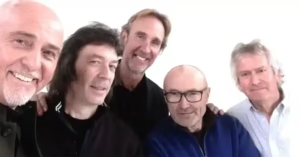Caravan: Melodic Architects of the Canterbury Sound
Caravan. The Beginnings: From Wilde Flowers to Caravan
Caravan was formed in 1968 in Canterbury, England, by four musicians who had previously played in The Wilde Flowers—a seminal group that also spawned Soft Machine. The original lineup featured:
- Pye Hastings – vocals, guitar
- Richard Sinclair – bass, vocals
- David Sinclair – keyboards
- Richard Coughlan – drums
This initial formation laid the foundation for a unique fusion of progressive rock, psychedelia, jazz, and British folk, which would come to be known as the Canterbury Scene—a movement distinguished by its whimsical lyrics, complex song structures, and jazz-inflected improvisation.
Debut Album: Caravan (1968)
Caravan’s self-titled debut album, released in 1968, was a promising mixture of psychedelia and proto-prog. Tracks like “Place of My Own” showcased Pye Hastings’ warm vocals and David Sinclair’s organ-led arrangements, though the band had yet to fully develop their signature sound.
It laid the groundwork for what was to come—a gentle, melodic, and highly imaginative form of progressive rock.
Defining the Canterbury Sound: If I Could Do It All Over Again, I’d Do It All Over You (1970)
The band’s second album marked a creative leap. With its playful title and jazz-rock influences, this release established Caravan as a central figure of the Canterbury movement.
Highlights include:
- “And I Wish I Were Stoned / Don’t Worry” – A seamless blend of soft vocals and jazz fusion.
- “For Richard” – An instrumental tour de force that would become a live staple, showcasing the band’s improvisational skill.
The album mixed pastoral melodies with intricate arrangements and offbeat humor, earning Caravan a cult following.
The Masterpiece: In the Land of Grey and Pink (1971)
Often considered Caravan’s magnum opus, this album encapsulated everything the band stood for—lyrical fantasy, complex compositions, and a playful British charm.
Key tracks:
- “Golf Girl” – Lighthearted and whimsical, featuring a catchy melody and brass accents.
- “Winter Wine” – A mystical ballad with Richard Sinclair’s dreamlike vocals.
- “Nine Feet Underground” – A 22-minute progressive epic driven by David Sinclair’s swirling organ, shifting tempos, and jazzy interplay.
In the Land of Grey and Pink is frequently cited as one of the greatest progressive rock albums of all time and a definitive statement of the Canterbury style.
Caravan. Changing Times: Waterloo Lily and Line-up Shifts
In 1972, Caravan released Waterloo Lily, a jazzier, more experimental effort featuring keyboardist Steve Miller (brother of Phil Miller from Matching Mole). David Sinclair had temporarily left, and the album leaned further into jazz improvisation, which divided some fans.
Richard Sinclair soon departed to join Hatfield and the North, another Canterbury mainstay, while the band began incorporating more mainstream elements in subsequent albums.
Mid-70s Era: A Softer, More Accessible Sound
With albums like:
- For Girls Who Grow Plump in the Night (1973)
- Cunning Stunts (1975)
- Blind Dog at St. Dunstans (1976)
Caravan moved toward a more accessible, song-oriented style, incorporating strings and streamlined arrangements. While these albums weren’t as adventurous as earlier works, they still featured clever compositions, lush instrumentation, and moments of brilliance.
Pye Hastings increasingly took control of the songwriting, steering the band into symphonic pop-prog territory.
Caravan. Later Years and Periodic Reunions
By the late 1970s, Caravan’s popularity waned amid the rise of punk and new wave. However, the band never officially disbanded. Through the decades, they have reunited multiple times, with different lineups and occasional releases.
Notable later albums include:
- The Battle of Hastings (1995)
- Paradise Filter (2013)
- It’s None of Your Business (2021)
Their live performances, particularly in Europe and Japan, have maintained a loyal fan base, and classic-era tracks remain beloved by progressive rock aficionados.
Caravan. Musical Style: Charm, Melody, and Imagination
Caravan’s style is defined by:
- Pastoral melodies and English humor
- Jazz-influenced improvisation
- Hammond organ and fuzz tones from David Sinclair
- Fluid time signatures and instrumental passages
Unlike some of their more bombastic prog-rock contemporaries, Caravan maintained a lightness of touch, making their music feel intimate, intricate, and irresistibly English.
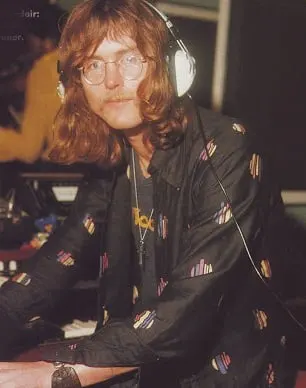
Caravan. Legacy: The Gentle Kings of Canterbury
Caravan may not have reached the commercial heights of Genesis or Yes, but their influence within progressive circles is immense.
They helped:
- Define the Canterbury Scene with Soft Machine, Gong, and Hatfield and the North
- Inspire bands like National Health, The Muffins, and even aspects of modern post-rock
- Keep alive a unique blend of sincerity, virtuosity, and subtle humor in progressive music
Their early work, particularly In the Land of Grey and Pink, remains a cornerstone of British progressive rock, cherished for its balance of musical sophistication and whimsical charm.
Final Thoughts: Caravan’s Enduring Appeal
More than five decades on, Caravan’s music continues to captivate with its blend of melody, fantasy, and musical intelligence. Whether you’re new to the Canterbury Scene or a seasoned explorer of prog, Caravan offers a journey unlike any other—gentle, adventurous, and timelessly British.


